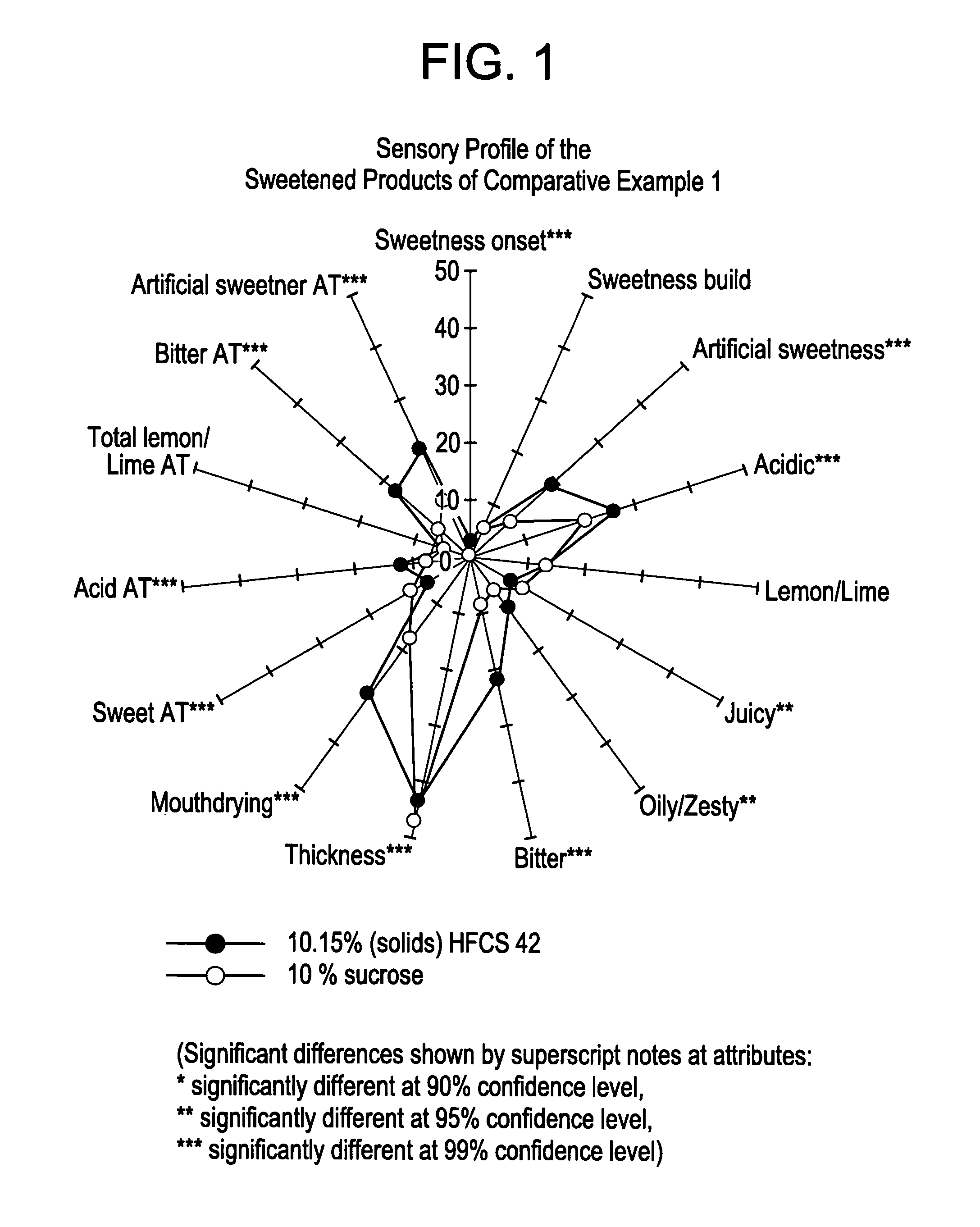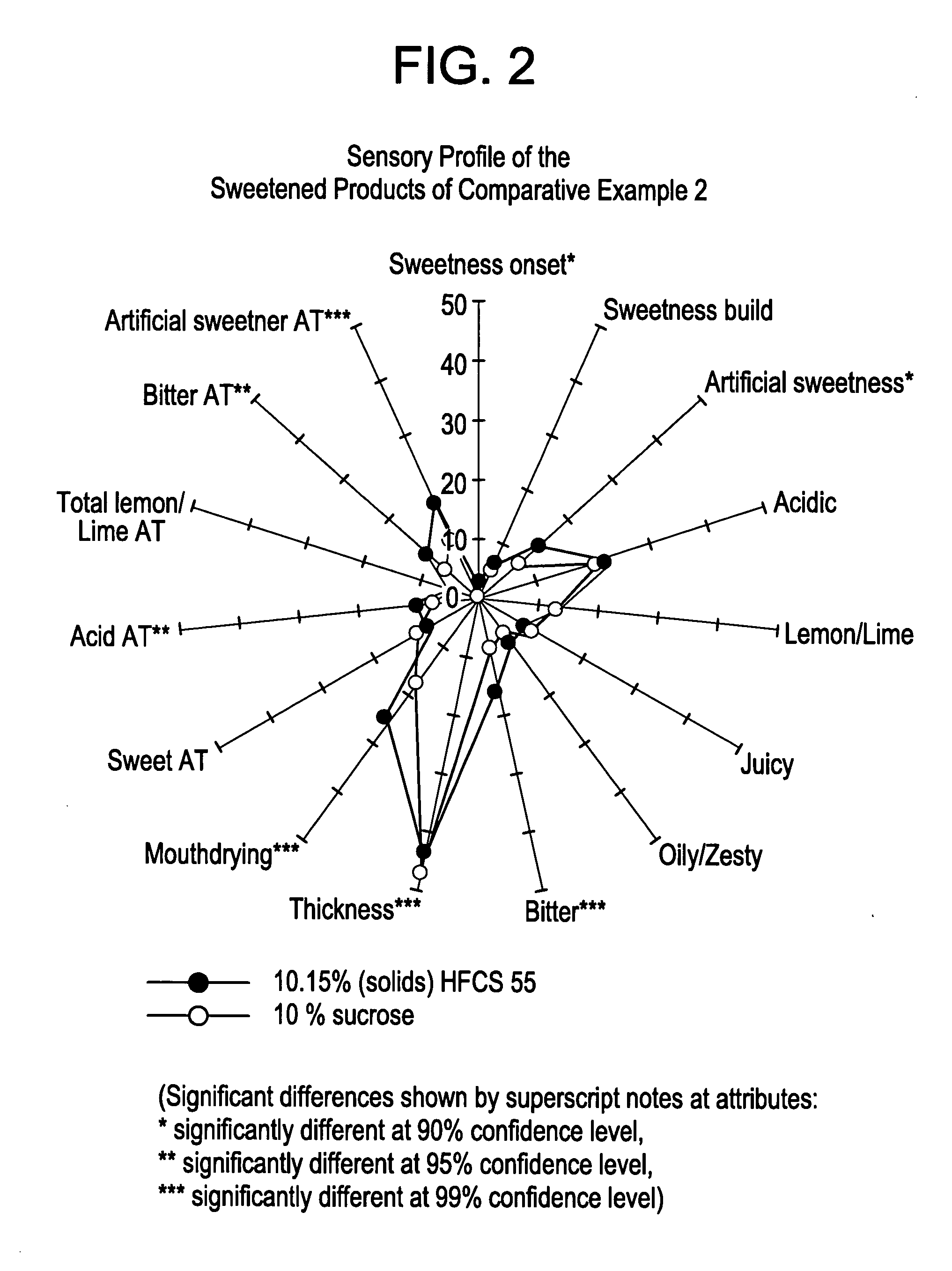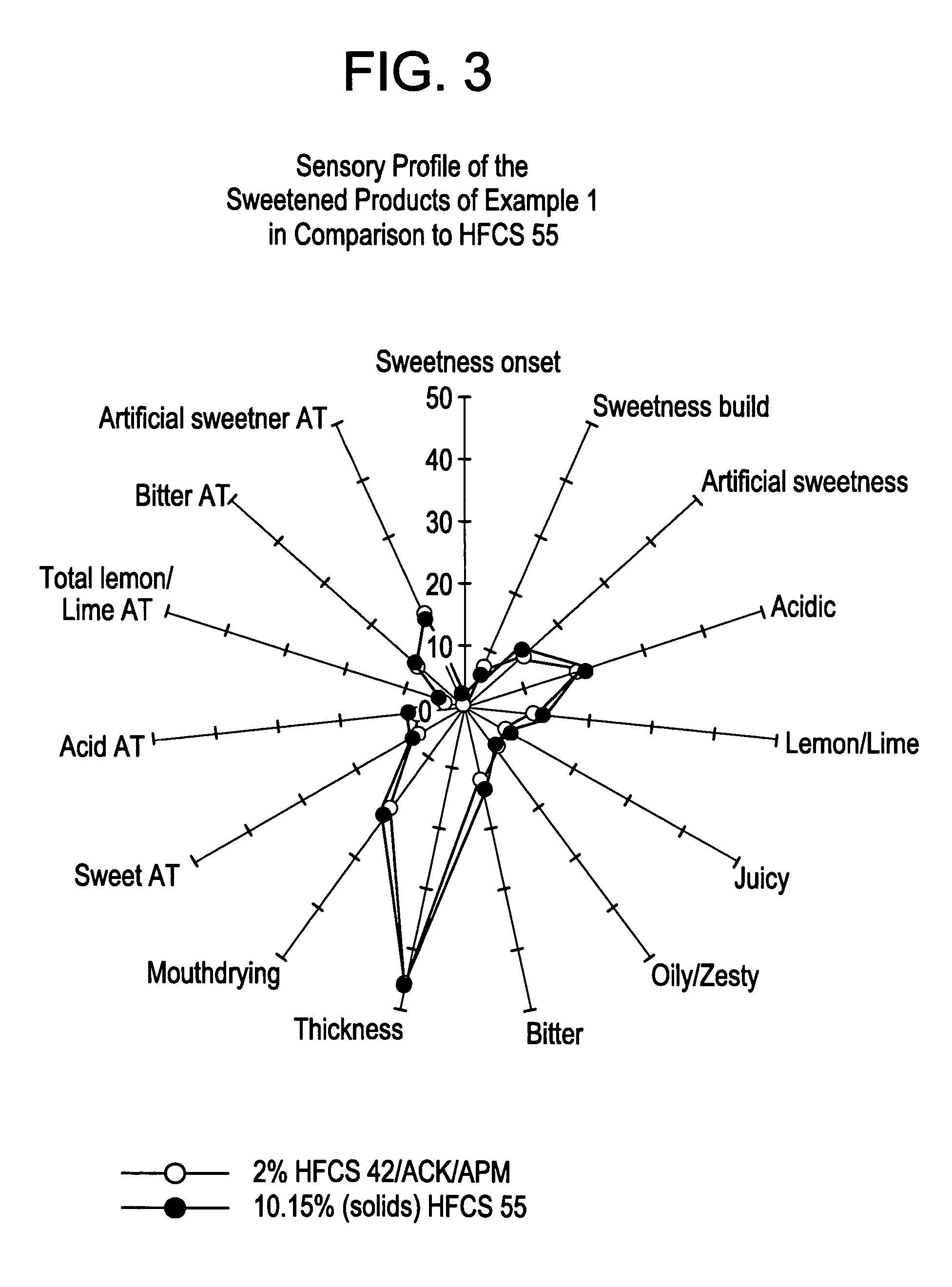Sweetener compositions with a sweetness and taste profile comparable to HFCS 55
a technology of sweetener composition and taste profile, applied in the field of sweetener compositions, can solve the problems of high caloric content of carbohydrate sweeteners, inability to match the overall taste sensation of hfcs, and inability to combine high intensity sweeteners with high intensity, so as to achieve the effect of reducing calorie sweeteners, high intensity sweeteners, and high intensity sweeteners
- Summary
- Abstract
- Description
- Claims
- Application Information
AI Technical Summary
Benefits of technology
Problems solved by technology
Method used
Image
Examples
example 1
10.15 wt % (bowf) HFCS 55 vs. 2 wt % (bowf) HFCS 42 and Acesulfame K / Aspartame in a Lemon-Lime Carbonated Beverage
[0060] The sensory profiles of a 10.15 wt.-% (bowf) HFCS 55 sweetened product was compared to a product sweetened with a reduced-calorie sweetener composition formed from (a) 2 wt % (bowf) HFCS 42 carbohydrate sweetener and (b) a high intensity sweetener composition formed from the combination of 0.115 g / l acesulfame K and 0.115 g / l aspartame. The products were based on the beverage system described in Comparative Example 1. The results are shown in FIG. 3. No statistically significant sensory differences between the two products were observed (alpha=0.01).
example 2
10.15 wt % (bowf) HFCS 55 vs. 2 wt % (bowf) HFCS 42 and Acesulfame K / Sucralose in a Lemon-Lime Carbonated Beverage
[0061] The sensory profiles of a 10.15 wt.-% (bowf) HFCS 55 sweetened product was compared to a product sweetened with reduced-calorie sweetener composition formed from (a) 2 wt. % (bowf) HFCS 42 carbohydrate sweetener and (b) a high intensity sweetener composition formed from the combination of 0.090 g / l acesulfame K and 0.097 g / l Sucralose. The products were based on the beverage system described in Comparative Example 1. The results are shown in FIG. 4. No statistically significant sensory differences between the two products were observed (alpha=0.01).
example 3
10 wt % (solids) HFCS 55 vs. 2 wt % (bowf) Sucrose Plus Acesulfame K / Sucralose in a Lemon-Lime Carbonated Beverage
[0062] The sensory profiles of a 10.15 wt.-% (bowf) HFCS 55 sweetened product was compared to a product sweetened with a reduced-calorie sweetener composition formed from (a) 2 wt. % (bowf) sucralose carbohydrate sweetener and (b) a high intensity sweetener composition formed from the combination of 0.115 g / l acesulfame K and 0.115 g / l aspartame. The products were based on the beverage system described in Comparative Example 1. The results are shown in FIG. 5. No statistically significant sensory differences between the two products were observed (alpha=0.01).
PUM
 Login to View More
Login to View More Abstract
Description
Claims
Application Information
 Login to View More
Login to View More - R&D
- Intellectual Property
- Life Sciences
- Materials
- Tech Scout
- Unparalleled Data Quality
- Higher Quality Content
- 60% Fewer Hallucinations
Browse by: Latest US Patents, China's latest patents, Technical Efficacy Thesaurus, Application Domain, Technology Topic, Popular Technical Reports.
© 2025 PatSnap. All rights reserved.Legal|Privacy policy|Modern Slavery Act Transparency Statement|Sitemap|About US| Contact US: help@patsnap.com



